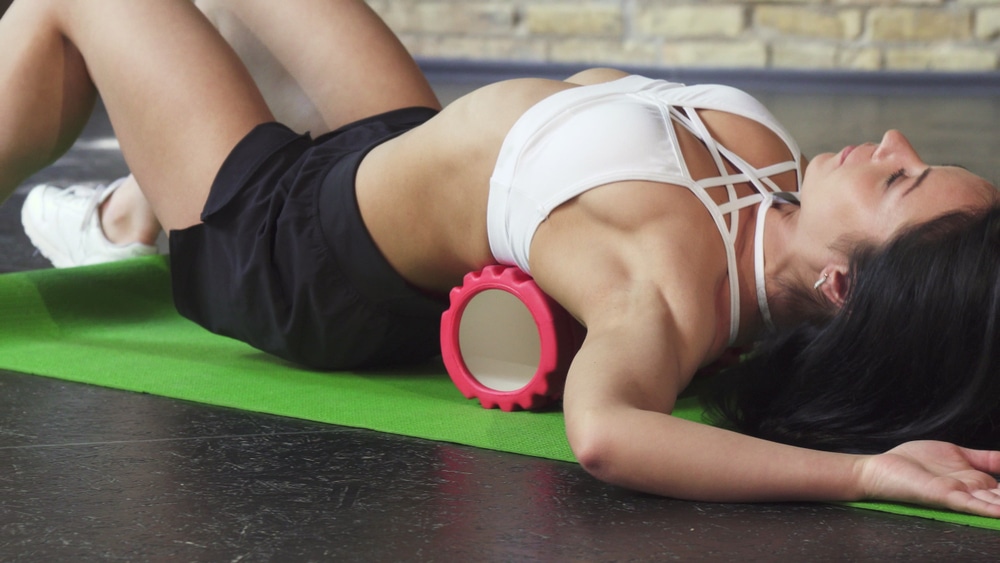Myofascial release therapy involves a gentle, continuous massage that relieves tightness and pain in your myofascial tissues. Your healthcare provider will first identify trigger points or knots in your fascial tissues, then apply gentle pressure until the tension eases.

What is myofascial release therapy?
Myofascial release methods are frequently used to treat chronic pain, muscular stiffness, and reduced movement. The primary goal of myofascial release is to stretch and relax the fascia, which is the slender, flexible connective tissue that envelops and reinforces muscles and other bodily components.
Pain and suffering can result when the fascia becomes restricted or inflexible. Myofascial release techniques aim to slacken and extend the fascia, enabling increased mobility and pain relief.
Steps for Do-It-Yourself Myofascial Release
- Determine a trigger point or tense muscle location. Gently massage the region with your fingertips to identify any particularly tender or painful places.
- Apply gentle strain to the trigger point using your fingertips, knuckles, or a massage instrument. Apply a firm yet acceptable amount of pressure and hold it for at least 30 seconds.
- Gradually increase the pressure as the muscle begins to relax. To release muscular tension, you can also utilize circular or to-and-fro movements.
- Maintain pressure on the trigger point and massage it until the muscle feels released. This might take a few seconds to many minutes, depending on the strength of the stress.
While performing myofascial release, remember to be gentle and listen to your body’s messages. If the pressure seems too strong or causes discomfort, reduce the pressure or stop the massage. If you have any concerns about using myofascial release or if you have a chronic health issue, you should visit a trained massage therapist or a healthcare practitioner.

It’s worth mentioning that dietary deficits in vitamins C, B1, B12, B6, Folic Acid, Malic Acid, and Magnesium can all exacerbate myofascial pain.
Recommended:
Hot Stone Massage
Risk of Myofascial Release Therapy
Myofascial release therapy, similar to other massage methods, has few risks. In rare cases, it may cause:
- Internal bleeding
- Difficulty moving your muscles
- Temporary paralysis
- Nerve damage
If you have any of these conditions, just chat with your healthcare provider. They might recommend skipping myofascial release therapy or checking out another type of therapy instead.
- Bone fractures
- Burns
- Open wounds
- Deep vein thrombosis
- Conditions necessitating blood thinners
- Metabolic condition
Important Pointers for Applying Myofascial Release Techniques
Mental Preparedness and Communication
Before treating a client, emotionally and physically prepare oneself. Set a therapy objective, practice effective communication, and hone your dialoguing abilities.
Focus on your tactile sense while maintaining a compassionate and receptive attitude to ensure that the therapy is client-centered. Become aware of your body before making a physical touch with a client. Make sure you’re comfortable and at peace in your surroundings and that you’ve left your mental baggage at the therapy room door.
Your whole attention should be in the therapy session, where you should be totally present and focused. Some therapists refer to this condition as grounding or centering.
Setting Specific Goals
Define your intentions before the treatment session. Keep an open mind when dealing with your client, so you can meet their needs instead of sticking to a rigid, symptom-focused approach. Always approach your client’s body with curiosity, empathy, and care. Adopt a “how can I assist?” mindset. Encourage open communication by asking, “what do you need?” Handle each step gently and purposefully, without rushing. Instead of forcing through tissues, feel and explore them attentively.
Getting to Know Your Client
It’s crucial to connect with your client. After gathering personal information and conducting the postural and palpatory exam, explain the method you’ll use and its application. Focus on your touch preparation by being mindful of your hands’ placement and engaging with the client’s body. This approach encourages client participation.
Maintain an open dialogue and mental clarity throughout the therapy session. Stay attentive to your goal, connection, and communication, avoiding distractions from external stimuli. Strengthen the unconscious (right brain) thinking and hypnagogic state by deepening the connection with your client and exploring inner consciousness together. Minimize casual conversation that activates the analytical left brain, disrupting the connection with the client’s body.
Myofascial release (MFR) isn’t a formulaic approach but considers the individual’s fascial structure, limitations, personality, attitude, and life experiences. MFR is tailored to each unique person, not a one-size-fits-all protocol.
Understanding the Resistance Tissue Barrier
MFR procedures are implemented gradually and methodically. The goal is to soften through the surface fascia and reach the more robust, deeper fascia, which is where the constraints are. Each approach is used with purpose, never straining the barrier.
Application of the Stages of MFR Technique:
- Never do MFR with any lotion, wax, or oil on top of the skin.
- Make it your goal to develop a therapeutic relationship with both your client and yourself.
- Leaning into the tissue resistance depth barrier, lay your hands gently on the client’s body, and wait for a sense of yielding while having any necessary conversations with the client.
- Never squeeze the tissue or touch the skin with your hands.
- Take up the slack to the next tissue resistance barrier when the tissue relaxes.
- Prior to going on to the following barrier, wait at the current barrier for more yielding and softening.
- Wait for a three-dimensional tissue and restriction release before assisting it by picking up the tissue’s slack as it releases.
- Disengage carefully from the tissue after at least five minutes.
- Talk further with the client to get their comments or any other reactions to the approach that may point up further treatment locations.
- Check the client’s body for erythema, a red skin flare that happens when a tissue changes. This may also suggest other therapy regions.
MFR is essentially a three-dimensional treatment used to treat three-dimensional constraints within the three-dimensional fascial continuum.
As you practice the methods, you’ll notice that your hands begin to follow and become more fluid with the tissue as it releases and softens, rather than mechanically putting pressure in various directions.
Benefits of Exploring Myofascial Release Techniques
The advantages of investigating myofascial release techniques are numerous and span across many facets of physical health and well-being. Here’s a closer look at some of the important benefits:
1. Alleviation of Chronic Pain
2. Enhancement of Mobility and Flexibility
3. Reduction of Muscle Soreness and Recovery Time
4. Improvement of Posture and Physical Alignment
5. Augmentation of Body Awareness
6. Stimulation of Relaxation and Stress Relief
7. Supports Rehabilitation after Injury
Myofascial release methods offer many perks that help not just your body but also your mind and emotions. By adding these techniques to your daily routine, you can boost physical function, reduce discomfort, and enhance overall well-being. Just a heads-up, though, it’s smart to check in with a healthcare pro or therapist before diving into any new therapeutic routine.
Recommended:
Can Massage Help Arthritis
The Bottom Line
Exploring myofascial release techniques can bring tons of benefits for those wanting to boost physical health. By gently applying sustained pressure to the fascia, myofascial release can ease chronic pain, enhance mobility, lessen muscle soreness, and speed up recovery post-physical activity. It can also improve posture, body awareness, and relaxation, reducing stress.
A helpful tool for rehab after injuries or surgeries to regain optimal function. Myofascial release encourages people to take charge of their well-being, linking mind and body. Remember to handle these techniques with care and consult pros when needed. Regular myofascial release can lead to a healthier, livelier life.
FAQs
What are the techniques used for myofascial release?
Techniques include sustained pressure, stretching, and massage to release tension in the fascia, promoting pain relief and increased mobility.
What is the basis of myofascial release?
Myofascial release is based on the idea of manipulating the fascia to improve tissue flexibility and reduce pain caused by restrictions.
What are the 5 myofascial lines?
Myofascial lines refer to interconnected pathways of fascia in the body. Examples are the Superficial Front Line, Superficial Back Line, and Deep Front Line.
What is the basic of myofascial release?
The basic concept is to release tension and restrictions in the fascia to restore balance, mobility, and reduce pain.
What is the purpose of myofascial technique?
The purpose is to improve tissue flexibility, reduce pain, and restore the body’s natural movement patterns through manipulating the fascia.

















